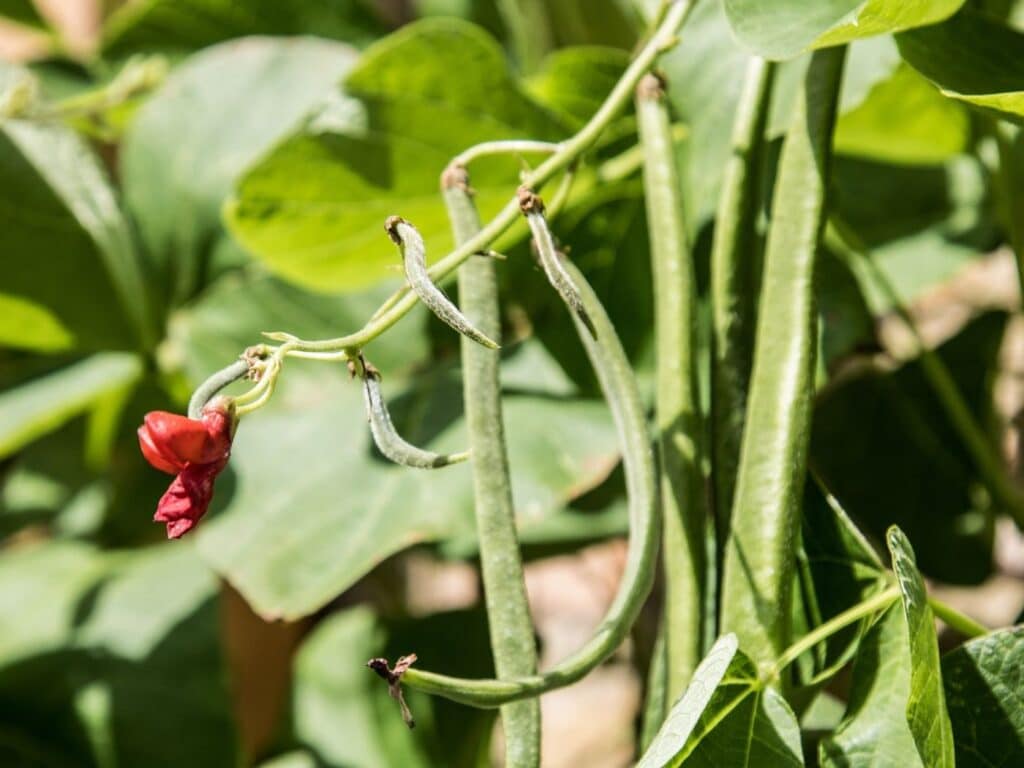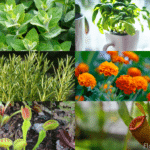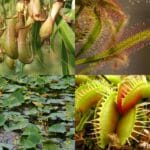Ever looked at your once lush green bean garden to find a disheartening sight of yellowing leaves? It’s a common issue faced by many garden enthusiasts, but don’t fret. Understanding the root cause is the first step to restoring your garden’s health.
Understanding the Yellowing of Green Bean Leaves
Possible Causes of Yellow Leaves in Green Bean Plants
Yellowing leaves in green bean plants can indicate an issue that requires prompt attention. One key potential cause involves nutrient deficiencies.
A lack of vital substances, particularly nitrogen, magnesium, and iron, can prompt leaf discoloration. A visual check for yellow leaves with green veins can confirm a nutrient deficiency.
Another common cause involves improper watering. Both over-watering and under-watering can trigger a stress response in the plant, leading to yellow leaves. If the leaves seem wilted and brittle, you’re likely not watering enough. But if the plant exhibits yellowing leaves with a generally healthy appearance, excessively moist soil could be the problem.
Lastly, pest invasion often results in leaf yellowing. Mites, whiteflies, and aphids are among the usual suspects, extracting the plant’s essential nutrients and causing the leaves to turn yellow. Consider an inspection for any signs of pest damage, such as bite marks, discolored patches, or actual pests on the plant.
The Impact on Plant Health and Yield
The yellow discoloration of leaves may seem like a minor issue, but it’s not one to overlook. Every leaf plays a part in photosynthesis, and when they turn yellow, this vital process gets disrupted, leading to a considerable impact on the green bean plant’s overall health.
In turn, a less healthy plant often produces a lower yield. Yellowed leaves can cause beans to mature slowly, grow smaller, or even fail to form. Even if beans do develop, their quality may be substandard, affecting not just quantity, but also the quality of the harvest.
Addressing the root cause of yellowing leaves as soon as you notice them is critical for ensuring a healthy, productive crop. By promptly responding to these early warning signs, you can improve the health of your green bean plants and boost their yield.
Common Reasons Behind Yellowing Leaves

Nutrient Deficiencies
Sometimes, discolored leaves can be traced back to nutrient deficiencies. Lack of essential elements like nitrogen, phosphorous, or potassium can manifest as yellow leaves. Nitrogen deficiency commonly results in a lightening of green leaves, sliding into yellow or even white hues.
Watch for older leaves turning yellow first, a common symptom of this deficit. Similarly, a phosphorous deficit can show up as yellowing along leaf edges. A lack in potassium often causes yellowing between leaf veins.
Water Imbalance
Water plays a critical part in maintaining the overall health of your green bean plants. Is the soil too wet or too dry? Both could be culprits behind your plants’ yellow leaves.
Over watering can cause root rot, impeding the plant’s ability to intake necessary nutrients—resulting in yellow leaves. Similarly, beans are a bit finicky about wet feet, under watering can lead to dehydration, causing leaves to yellow and curl inward.
Pest Infestations
Let’s not overlook those destructive invaders — pests. Pests like aphids, spider mites, and whiteflies can suck the life out of your once lush, green leaves causing them to turn yellow. Aphids draw out the plant sap, which eventually introduces viruses leading to discolored leaves.
Spider mites, small arachnids barely visible to the naked eye, also feed off plant fluids. Unchecked whiteflies could lead to a sooty mold problem, stressing the plant and causing yellowing. Knowing your enemy makes prevention and treatment more effective.
Disease-Related Yellowing of Green Bean Leaves
Identification of Diseases
Spotting a plant disease starts by recognizing symptoms. For example, bacterial blight, common in green beans, exhibits small, water-soaked spots appearing first on the lower leaves. These spots gradually darken, causing leaf yellowing and potential leaf drop.
Conversely, Fusarium wilt shows yellowing initially on one side of the plant before gradually consuming all leaves. Identifying diseases promptly lets you address the issue before it’s severe.
Preventive Measures and Treatments
Prevention proves more effective than treatment in most disease cases. Crop rotation of beans with non-legume crops reduces the chances of bacterial blight. Additionally, avoiding overhead watering helps to minimize water-soaked spots, a breeding ground for bacteria.
For Fusarium wilt, immediate removal of infected plants and sterilization of gardening tools reduces the spread. Chemical treatments exist for these diseases, but consider them as a last resort. Prioritize non-chemical deterrents, such as proper watering, adequate spacing, and removal of infected plants.
Environmental and Cultural Factors
Investigate the role of environmental and cultural factors in the health of your green bean plants.
Light Exposure and Yellowing
Green bean plants thrive in full sun exposure, clocking in 6-8 hours per day. Insufficient sunlight becomes evident in a pallid, yellow hue on leaves. Conversely, if the plants are scorched, you’ll find leaf tips mutating into a yellow-brown color.
Place your plants where they’ll get direct, yet moderate sunlight during the day. The key here is balance; enough sun exposure primes the plants for efficient photosynthesis, but excess can harm them.
Soil Conditions and Root Health
In gardening, it’s not gross to talk about dirt. Soil conditions profoundly affect the vigor of your green bean plants. Well-drained, sandy-loam soils, rich in organic matter, favor optimal growth. Poor drainage hampers root health. As roots drown in waterlogged conditions, they experience stress, leading to leaf yellowing.
Furthermore, soil pH swings can lock out important nutrients, causing deficiency symptoms like yellow leaves. Aim for a slightly acidic to neutral pH- between 6.0 to 7.0.
You can use a soil testing kit to gauge these parameters. Lastly, regular compost or manure boosts organic matter in the soil, encouraging vigorous root systems and healthy green leaves. Persist in fostering a beneficial environment, and your green beans will reward you with an ample yield.
Addressing the Issue of Yellow Leaves
When to Seek Professional Advice
Spotting yellow leaves on your green bean plants can be concerning. It’s important to ascertain whether it’s a simple fix or something more severe. Key signs that call for professional advice are when yellowing is widespread, there’s significant leaf drop, or upon close examination, you spot the presence of pests. Continual wilting, even after adequate watering, or the plant’s growth getting stunted, can also point to the need for expert intervention.
It’s good practice to document symptoms and the conditions under which they arose. It gives a precise picture to the plant healthcare professional and can aid in accurate problem diagnosis.
Remember, governing the health of green bean plants can be complex. Professionals, with their specialized knowledge, can provide targeted solutions, so don’t hesitate to seek their assistance when needed.
Home Remedies for Mild Cases
For mild cases of yellowing, some home remedies can prove effective. Regular, deep watering—not frequent surface watering—ensures that the roots receive moisture adequately. Remember, it’s overwatering, not the volume of water, that negatively impacts the plant. So, spacing out the watering schedule effectively counters this issue.
Mulching also benefits green bean plants. It holds moisture in the soil, reduces temperature fluctuations, and prevents compaction of the surface soil. Additionally, integrating compost into your soil enhances its nutrient content. Organic compost is particularly beneficial; it enriches the soil, improves its texture, and helps maintain an ideal pH level.
Pruning yellow leaves, particularly in the early stages, can control the spread of the issue. It allows the plant to direct its energy to healthier parts. Keep a keen eye for pests on the underside of leaves.
A natural dish soap solution diluted in water makes an effective, inexpensive pesticide perfect for mild infestations. These manageable remedies not only give you a good grasp of your plant’s health but also build confidence in your green thumb abilities.
FAQs
What are the possible reasons for yellow leaves in green bean gardens?
Yellow leaves in green bean gardens could be due to nutrient deficiencies, improper watering, pest infestations, incorrect light exposure, and unsatisfactory soil conditions.
How can pest infestations affect green beans?
Pests such as aphids, spider mites, and whiteflies can cause significant damage to green bean plants, leading to the yellowing of leaves and impacting plant health and yield.
What role does light exposure play in the health of green bean plants?
Proper sunlight exposure is crucial for the health of green bean plants. Insufficient or excess light can adversely affect the plants, thereby contributing to leaf yellowing.
How do soil conditions affect the health of green bean plants?
Well-drained, nutrient-rich soil is important for green bean plant health. Soil pH levels, drainage, and organic matter content play significant roles in root health and leaf color.
When should gardeners seek professional advice for yellowing green bean leaves?
Gardeners should seek professional advice if they witness severe cases of leaf yellowing and are unable to identify or manage the problem effectively with home remedies.
What are some home remedies for mild cases of yellowing green bean leaves?
Home remedies for mild cases of yellowing leaves include proper watering techniques, mulching, composting, pruning, and employing natural pesticide solutions. These tips aim to help maintain a thriving green bean garden.
Up next:







